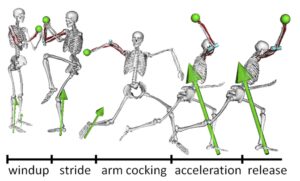 In the world of baseball, the refinement of pitching mechanics is pivotal for enhancing performance and preventing injuries. This refinement can be approached through two primary methodologies: Biomechanics Training and Cueing Pitching Mechanics. Each approach offers unique advantages and employs distinct techniques to optimize pitching efficacy.
In the world of baseball, the refinement of pitching mechanics is pivotal for enhancing performance and preventing injuries. This refinement can be approached through two primary methodologies: Biomechanics Training and Cueing Pitching Mechanics. Each approach offers unique advantages and employs distinct techniques to optimize pitching efficacy.
Definition of Biomechanics Training: Biomechanics Training is grounded in the application of mechanical principles to the study of biological systems. In the context of pitching, it involves analyzing the pitcher's movements using scientific principles and tools to identify and correct inefficiencies. This training encompasses the detailed assessment of a pitcher's kinetics and kinematics—how their limbs move and the forces involved in those movements. By leveraging data from high-speed cameras, motion sensors, and other biomechanical analysis tools, trainers and coaches can provide precise feedback on how to alter pitching mechanics for improved performance and reduced risk of injury.
Definition of Cueing Pitching Mechanics: Cueing Pitching Mechanics, on the other hand, relies on the use of verbal or visual signals to guide a pitcher's adjustments in real-time. This method is less about detailed scientific analysis and more about intuitive adjustments based on observed performance. Coaches use cues—concise, directive phrases or gestures—designed to prompt immediate changes in a pitcher’s technique. For example, a coach might tell a pitcher to "keep your front shoulder closed," to help them maintain energy and direction towards home plate, enhancing both the speed and accuracy of the pitch.
Overview of the Importance in Modern Baseball
The significance of both biomechanics training and cueing in modern baseball cannot be overstated. As the sport becomes increasingly competitive, the marginal gains from optimizing pitching mechanics can make a significant difference in a player's career longevity and effectiveness. Biomechanics training offers a deep, scientifically grounded understanding of how to enhance performance safely, making it an invaluable tool for long-term development. Meanwhile, cueing provides quick, actionable adjustments that can be crucial in high-stakes situations, such as games or tournaments.
Integrating these approaches not only maximizes the potential of pitchers but also contributes to a more strategic and informed coaching methodology. By understanding and implementing both biomechanics and cueing, coaches can tailor their training programs to fit the individual needs of their pitchers, promoting a healthier and more successful pitching career.
The Science Behind Biomechanics Training vs Cueing Pitching Mechanics
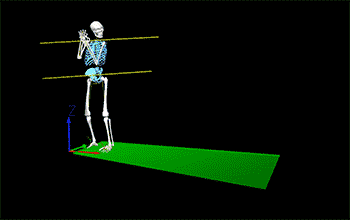 Biomechanics training is a sophisticated approach that merges the fields of mechanical physics with human physiology to optimize athletic performance and reduce the risk of injury. In the context of baseball pitching, this scientific methodology is fundamental for developing effective and efficient pitching techniques.
Biomechanics training is a sophisticated approach that merges the fields of mechanical physics with human physiology to optimize athletic performance and reduce the risk of injury. In the context of baseball pitching, this scientific methodology is fundamental for developing effective and efficient pitching techniques.
Fundamental Principles of Biomechanics in Sports
The core of biomechanics in sports lies in understanding how the body moves and what it experiences during those movements. This includes the analysis of forces and torques, motion, and leverage, all of which are crucial in pitching. The fundamental principles focus on dynamics and statics:
- Dynamics involves the study of bodies in motion and the forces that act on them. For pitchers, this includes the examination of how the kinetic chain—a sequence of movements produced by different body parts, from leg drive to arm whip—transfers energy throughout the motion.
- Statics pertains to analyzing balance and stability. For a pitcher, maintaining stability during the wind-up and delivery phases is crucial for control and power.
Key Metrics Used in Biomechanics Training
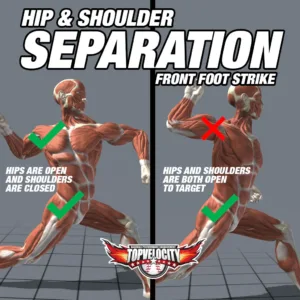 Biomechanics training utilizes various metrics to assess and enhance a pitcher's performance, including:
Biomechanics training utilizes various metrics to assess and enhance a pitcher's performance, including:
- Joint Angles: The angles at which joints are positioned and moved can greatly influence the effectiveness and safety of the pitch. Monitoring these angles helps in adjusting a pitcher’s posture and alignment for optimal power and minimal stress on the body.
- Velocity and Acceleration: These metrics are measured to evaluate the speed of limb movements and the ball itself. Enhancing these can directly contribute to the pitcher's throw speed.
- Force and Torque: Understanding the forces applied and the torque generated within the body, especially at the shoulder and elbow, is essential for developing pitches that are powerful yet safe on the body.
The Role of Technology in Biomechanics Training
Technology plays a pivotal role in biomechanics training, enabling a depth and precision of analysis that was not possible in earlier coaching methods:
- Motion Capture Systems: These systems track body movements in high detail, allowing coaches and trainers to analyze the mechanics of a pitch in real-time. Sensors and cameras record the motion, and software interprets the data to provide feedback.
- Wearable Sensors: Lightweight sensors worn on the body can provide real-time data on muscle activity, joint angles, and force application. This technology is particularly useful for pitchers to understand their own mechanics during the act of pitching.
- Simulation Software: Advanced software can simulate pitching motions and predict outcomes based on different mechanical inputs. This helps in hypothesizing and testing adjustments without physical trial and error, reducing the risk of injury from excessive physical experimentation.
The integration of these technologies into training regimes allows for a highly personalized coaching approach. Each pitcher’s unique biomechanical profile can be developed and refined, enhancing their natural style while bolstering performance and guarding against injury. This science-driven, technology-supported method is revolutionizing pitching training, making it a fundamental aspect of modern baseball coaching.
Understanding Cueing in Pitching Mechanics
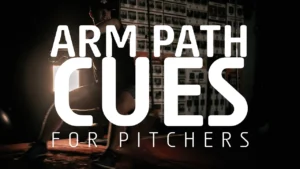 Cueing in pitching mechanics is a coaching technique that involves giving short, directive instructions to pitchers to help them adjust their actions for better performance. Unlike the data-driven approach of biomechanics training, cueing relies on observation and experience, making it a more intuitive and immediate method.
Cueing in pitching mechanics is a coaching technique that involves giving short, directive instructions to pitchers to help them adjust their actions for better performance. Unlike the data-driven approach of biomechanics training, cueing relies on observation and experience, making it a more intuitive and immediate method.
What is Cueing?
Cueing is the process of using verbal or visual signals to guide a pitcher's actions or adjustments during their pitching motion. These cues are designed to be easy to remember and quick to implement, focusing on specific aspects of the pitching delivery that can be adjusted in real-time. The purpose of cueing is to trigger small, impactful changes in a pitcher's mechanics by focusing their attention on specific details that align with effective pitching techniques.
Examples of Common Cues Used in Pitching
Coaches use a variety of cues tailored to the needs of individual pitchers. Some common examples include:
- "Stay tall": This cue is used to remind pitchers to maintain a vertical posture, preventing them from "collapsing" their body, which can lead to reduced power and accuracy.
- "Lead with the hip": Encouraging pitchers to initiate their movement towards the plate with their hips, which helps in generating more power from the lower body and maintaining a consistent arm slot.
- "Keep your front side closed": This cue helps pitchers keep their front shoulder and hip closed longer towards the target, enhancing velocity and control.
- "Snap your wrist": Used to remind pitchers to forcefully flex their wrist at the point of release, which can increase the ball's spin rate and speed.
Benefits of Cueing Pitching Mechanics
Cueing offers several advantages in the coaching of pitchers:
- Immediate Adjustments: Cues can be communicated and implemented instantly, allowing pitchers to make necessary changes during a game or practice session.
- Simplicity: The simplicity of cues makes them easy to understand and remember, especially under pressure.
- Flexibility: Cues can be adapted to the unique style and needs of each pitcher, providing a personalized coaching approach without the need for sophisticated equipment.
Limitations of Cueing Pitching Mechanics
While cueing is a valuable tool, it has its limitations:
- Lack of Precision: Unlike biomechanics training, which uses detailed data to make adjustments, cueing is based on observation and general principles, which might not address the specific biomechanical needs of every pitcher.
- Over-reliance: There is a risk of over-relying on cues, which can lead to mechanical rigidity as pitchers may focus too much on the cues and not enough on the natural flow of their pitching motion.
- Temporary Fixes: Cues often provide short-term solutions and may not address underlying issues in a pitcher’s mechanics, potentially leading to long-term performance problems or injuries.
- Training Bad Mechanics: There are many cues, like some of the examples above, that teach movements that are defined as pathomechanics in the world of biomechanics. This means these mechanics being taught are mechanics that will lead to injury or poor performance.
Despite these limitations, cueing remains an integral part of pitching coaching, offering a practical and effective way to communicate adjustments. When used in conjunction with biomechanics training, it can significantly enhance a pitcher's technique, leading to improved performance and reduced injury risk.
Implementing Biomechanics Training: Cueing Pitching Mechanics vs Biomechanics Training
Biomechanics training integrates advanced scientific principles into sports training, specifically focusing on optimizing each athlete's movement to improve performance and reduce injury risk. In baseball, particularly for pitchers, implementing biomechanics training involves a detailed understanding of motion and the forces affecting each pitch.
 Step-by-Step Guide to Incorporating Biomechanics into Training
Step-by-Step Guide to Incorporating Biomechanics into Training
- Assessment and Evaluation: Begin by assessing the pitcher's current mechanics through video analysis and physical assessments. This initial evaluation helps identify specific areas that need attention and serves as a baseline to measure progress.
- Education and Awareness: Educate the pitcher about biomechanics principles such as kinetic chains, force application, and the importance of joint alignment. Understanding the 'why' behind each movement can enhance a pitcher's commitment to the training process.
- Introducing Technology: Implement motion capture technology to gather accurate data on the pitcher’s mechanics. This might involve the use of high-speed cameras, wearable sensors, and force plates to record detailed movements during the pitch.
- Data Analysis: Analyze the data collected to pinpoint inefficiencies and areas of potential risk. Use this information to develop a customized training program that addresses these specific mechanical issues.
- Customized Training Interventions: Based on the analysis, introduce specific drills and exercises that target the identified areas. These might include drills to improve joint mobility, strength training for enhanced stability, and techniques to refine the pitching motion.
- Ongoing Monitoring and Adjustment: Regularly re-assess the pitcher's mechanics and make adjustments to the training program as needed. Continuous monitoring helps track progress and ensures that the training remains effective and relevant.
- Feedback and Communication: Provide continuous feedback to the pitcher, using both the biomechanical data and visual evidence from video analysis. Clear, constructive feedback helps the pitcher understand their progress and areas needing further improvement.
 Necessary Equipment and Software for Biomechanics Training
Necessary Equipment and Software for Biomechanics Training
- High-Speed Cameras: Essential for capturing rapid movements that are not visible to the naked eye.
- Motion Capture Systems: These systems use sensors placed on the pitcher’s body to track movement and provide detailed biomechanical data.
- Force Plates: Used to measure the forces generated by a pitcher’s feet during the pitching motion, which is crucial for understanding ground force application.
- Wearable Sensors: Devices that measure muscle activity and joint angles during a pitch, offering insights into the kinetic chain.
- Analysis Software: Specialized software that interprets data from the above tools, providing comprehensive reports that help in decision-making.
Training Plans and Schedules for Pitchers
- Pre-season: Focus on building strength, flexibility, and basic mechanics. Use biomechanics training to establish a solid foundation before competitive play begins.
- In-season: Concentrate on maintaining mechanics, with a reduced focus on heavy strength training to avoid fatigue. Biomechanics sessions during this period should aim to refine technique and address any emerging issues.
- Off-season: Utilize this time for intensive biomechanical analysis and correction. The off-season allows for a more rigorous focus on modifying and improving pitching mechanics without the pressure of imminent games.
Implementing a structured biomechanics training program requires a careful blend of scientific analysis, tailored training interventions, and ongoing adjustments. By methodically applying these principles, pitchers can achieve significant improvements in their performance, enjoy a reduced risk of injury, and extend their careers in baseball.
TopVelocity Camps: Cueing Pitching Mechanics vs Biomechanics Training
For pitchers and position players aiming to enhance their performance through biomechanics, attending the 3X Velocity Camp for pitchers or the 2X Velocity Camp for position players marks a significant step in their athletic development. These camps, designed by TopVelocity, offer an immersive training experience focused on implementing biomechanical principles into daily practice to improve power, speed, and overall performance.
The 3X Velocity Camp for Pitchers
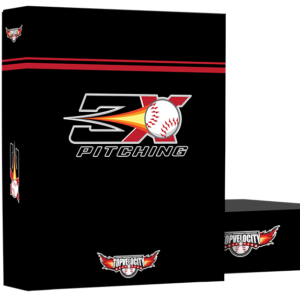 The 3X Velocity Camp provides pitchers with a comprehensive training program that integrates biomechanics into every aspect of pitching. This camp is not just about increasing pitch speed but also about enhancing overall athleticism and reducing injury risk through a scientifically backed training regimen. Here’s what participants can expect:
The 3X Velocity Camp provides pitchers with a comprehensive training program that integrates biomechanics into every aspect of pitching. This camp is not just about increasing pitch speed but also about enhancing overall athleticism and reducing injury risk through a scientifically backed training regimen. Here’s what participants can expect:
- Biomechanics Analysis: Each pitcher undergoes a detailed biomechanical analysis, which includes high-speed video assessments to break down their pitching mechanics. This analysis helps identify specific areas for improvement and is foundational for the personalized training plan.
- Functional Strength Training: The camp emphasizes the importance of strength in generating velocity and maintaining health. Pitchers engage in weight training routines that are specially designed to improve the strength and mobility of muscles critical to pitching.
- Motor Skill Development: Through a series of drills and practices, pitchers refine their techniques to ensure that their body movements are as efficient as possible. These activities are tailored to reinforce the biomechanical adjustments needed to enhance performance.
- Personalized Coaching: Each participant receives hands-on coaching and feedback, ensuring that they understand the biomechanical principles behind each exercise and drill. This personalized attention guarantees that pitchers can continue to apply what they've learned once they leave the camp.
The 2X Velocity Camp for Position Players
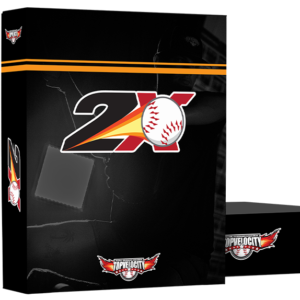 Position players can benefit similarly by attending the 2X Velocity Camp, which focuses on applying biomechanics to improve batting and fielding. The camp features:
Position players can benefit similarly by attending the 2X Velocity Camp, which focuses on applying biomechanics to improve batting and fielding. The camp features:
- Skills Assessment: Initially, players go through a thorough assessment of their hitting and fielding skills, incorporating biomechanical analysis to pinpoint inefficiencies and areas for improvement.
- Explosive Power Training: Understanding that power and velocity are crucial for hitting and throwing, the camp includes specialized training to enhance explosive strength. This includes plyometrics and speed training to improve quickness and reaction times.
- Technical Skill Development: Coaches work closely with players to refine their batting and fielding mechanics, ensuring that each movement is optimized for both performance and safety.
- Strategy and Game Intelligence: Beyond physical skills, the camp also focuses on the strategic aspects of baseball, helping players make smarter decisions during games. This holistic approach ensures that players can integrate their biomechanical training with tactical game play.
Attending either the 3X Velocity Camp for pitchers or the 2X Velocity Camp for position players is an excellent opportunity for athletes to immerse themselves in a training environment that champions the principles of biomechanics. These camps not only provide the tools and knowledge necessary for immediate improvement but also instill practices that contribute to long-term success and health in baseball.
FAQ: Cueing Pitching Mechanics vs Biomechanics Training
- What is the most effective method for training young pitchers? The most effective method for training young pitchers combines biomechanics training with age-appropriate strength and conditioning. This approach should also include fundamentals of pitching mechanics, mental coaching, and proper rest to prevent overuse injuries. Biomechanics training, in particular, helps in understanding the natural movement patterns of young pitchers and guides adjustments that enhance performance while minimizing the risk of injury. It is also beneficial to introduce young pitchers to proper warm-up routines, pitching drills that emphasize technique over power, and regular feedback sessions to foster a deeper understanding of pitching mechanics.
- How often should biomechanics evaluations be conducted? For optimal results, biomechanics evaluations should be conducted regularly throughout the training cycle. Initially, a comprehensive evaluation is recommended to establish a baseline before the start of an intensive training program. Afterward, evaluations should be scheduled every three to six months to monitor progress and adjust training plans accordingly. Additionally, if a pitcher is returning from an injury or experiences a sudden change in performance, immediate biomechanical evaluation is advisable to assess any alterations in technique that might contribute to these issues.
- Can cueing be harmful if used incorrectly? Yes, cueing can be harmful if used incorrectly. Ineffective or incorrect cueing can lead to confusion, misinterpretation, and the development of poor mechanical habits. For instance, a cue that is too vague or overly technical might not resonate with a pitcher, leading to incorrect adjustments that could impair performance or increase injury risk. Coaches need to ensure that cues are clear, concise, and tailored to the individual's level of understanding and current mechanical needs. Additionally, relying solely on cueing without understanding the underlying biomechanics can prevent addressing the root causes of mechanical inefficiencies.
- What are the latest technological advances in biomechanics training? Recent technological advances in biomechanics training include the integration of wearable sensors, real-time motion capture systems, and advanced analytics software. Wearable sensors can track muscle activity, joint angles, and force exertion, providing instant feedback to athletes and coaches. Real-time motion capture systems offer a comprehensive analysis of movement patterns during actual play, not just in a controlled training environment. Furthermore, machine learning and artificial intelligence are increasingly being employed to analyze large datasets from these technologies, offering personalized training programs and predicting potential injury risks before they become apparent.
- How do different coaching styles affect the choice between biomechanics and cueing? The choice between focusing on biomechanics or cueing often depends on a coach's style and philosophy. Coaches who emphasize a scientific, data-driven approach are more likely to prefer biomechanics training, as it provides quantifiable metrics and a deeper understanding of a player's mechanics. In contrast, coaches who value intuition and flexibility in training might favor cueing, as it allows for quick adjustments and can be easily adapted to suit different pitchers' styles and needs. Ultimately, the most effective coaching strategies often integrate both approaches, using biomechanics to inform the development of effective cues that help pitchers adjust their mechanics in real-time.
For more exclusive content visit TopVelocity Patreon!


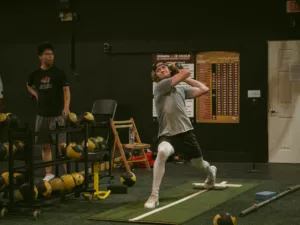 Step-by-Step Guide to Incorporating Biomechanics into Training
Step-by-Step Guide to Incorporating Biomechanics into Training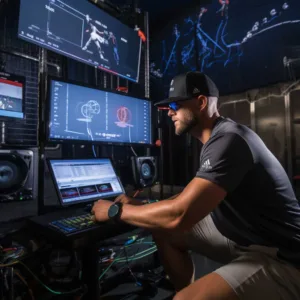 Necessary Equipment and Software for Biomechanics Training
Necessary Equipment and Software for Biomechanics Training

